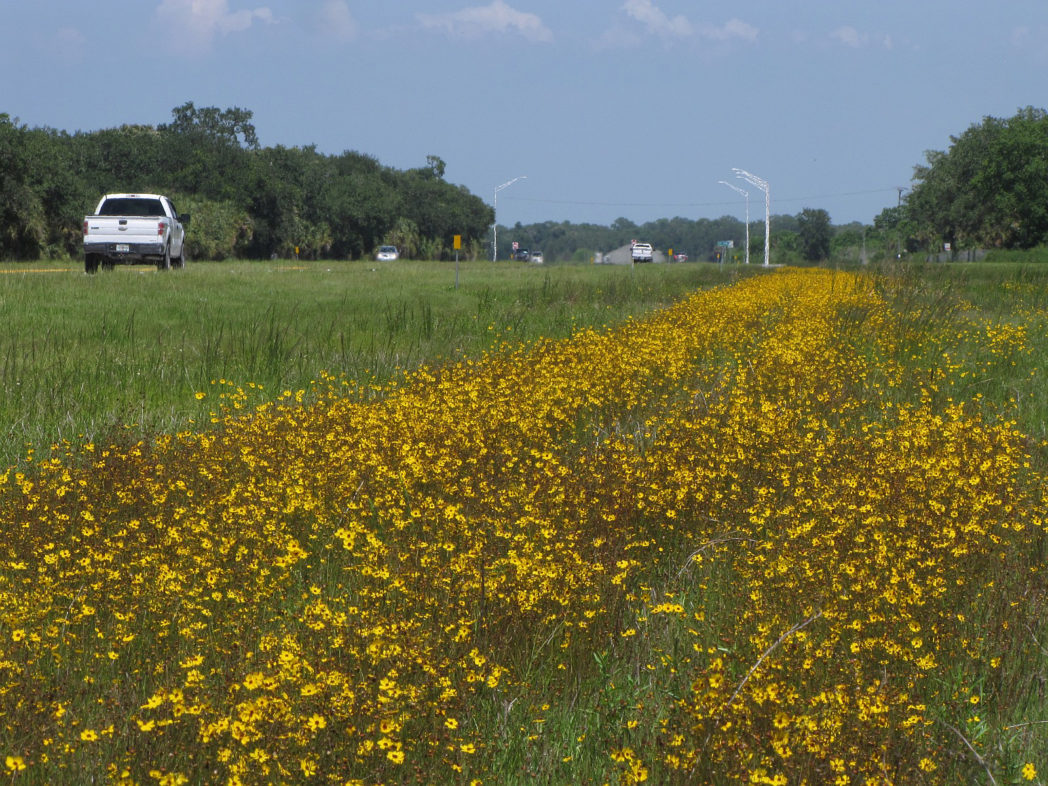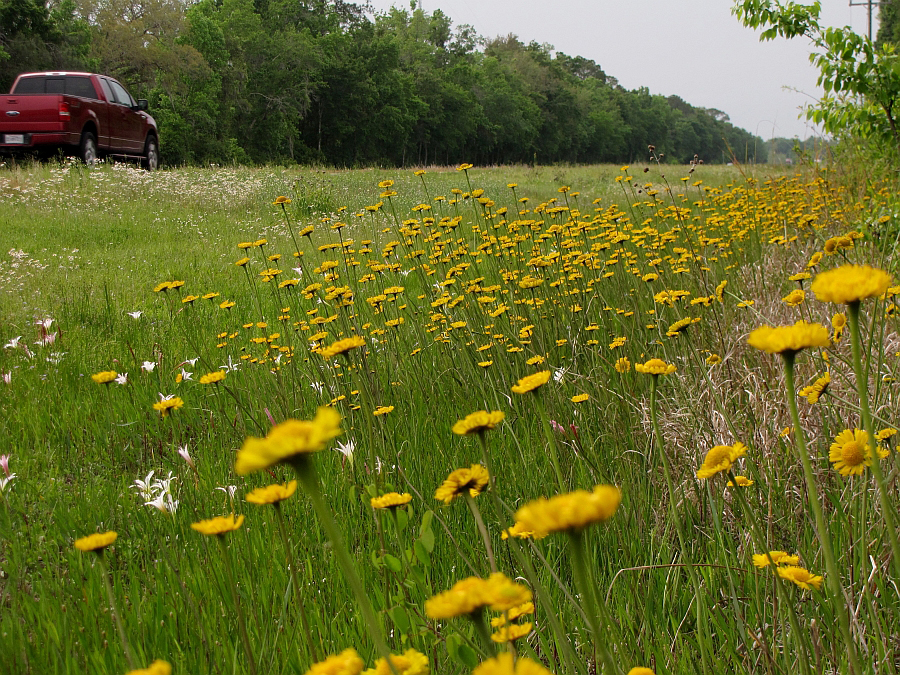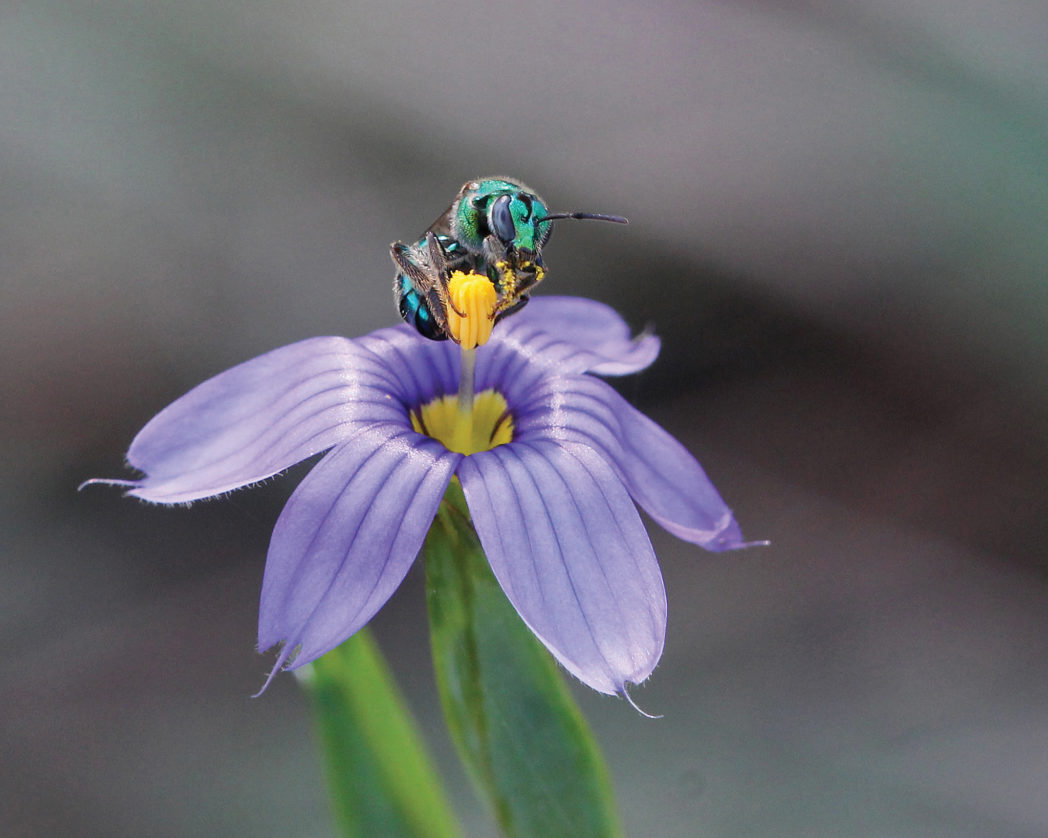Bloom Report: Wildflowers bloom earlier than normal
Pictured above: Sweat bee on blue-eyed grass (Sisyrinchium sp.). Photo by Mary Keim
Here we go again… Wildflowers are blooming earlier than normal, and that also means now is not too soon to be looking for wildflowers that normally would bloom in late March or early April, such as Blue-eyed grass (Sisyrinchium spp.), Lanceleaf tickseed (Coreopsis lanceolata), Southeastern sneezeweed (Helenium pinnatifidum), Lyreleaf sage (Salvia lyrata), and Spiderwort (Tradescantia ohiensis). The remainder of the spring weather should be normal, so the effect of the warm, wet weather should dissipate by the end of spring… unless it doesn’t.
In Central and South Florida, temperatures are expected to be above normal in March, with normal temperatures the remainder of spring. While rain should be normal throughout spring, NOAA predicts that drought conditions will persist in a large portion of south Central Florida and are likely to develop in South Florida (see U.S. Seasonal Drought Outlook).
Where to find wildflowers
Given that outlook, the best places to see native wildflowers will be naturally moist areas, especially in April and May. Look for two of the showiest and most common wildflowers in moist sites — Leavenworth’s tickseed (Coreopsis leavenworthii) and Black-eyed Susan (in North Florida, it tends to occur in drier locations). Because March is expected to be warmer than normal, look for typical April and May bloomers a few weeks earlier than you otherwise would. For instance, Leavenworth’s tickseed and Black-eyed Susan are already blooming.
A good place to view showy stands of wildflowers that prefer moist sites is along Florida’s Turnpike south of Orlando, from about mile marker 220 south to Yeehaw Junction. Leavenworth’s tickseed and Black-eyed Susan have started flowering in these areas, which means the brilliant yellow flowers of Southeastern sneezeweed should be brightening roadsides and natural areas soon.

Because March is expected to be warmer than normal, Prairie iris (Iris hexagona) and Duck potato (Sagittaria spp.) should be flowering by early April. If you get lucky, you might even spot the bright reddish spikes of the Leafless beaked orchid (Sacoila lanceolata) that month.
Not near an area with naturally moist conditions? Head toward the coast. Blanketflower and Beach sunflower (Helianthus debilis) are showy native wildflowers that thrive in dry, sandy conditions. They can be bloom at any time of the year in South Florida, and typically start by early to mid-spring in the Panhandle.
When you are out and about enjoying the spring beauty that Mother Nature has blessed us with, please don’t pick wildflowers. If you want to preserve the memory of a wildflower, take a picture — it will last longer. Many of our native wildflowers reproduce only by seed. Picking a flower reduces a plant’s ability to sustain itself.
For specific locations to view wildflowers, drive one of the wildflower routes developed by the Florida Wildflower Foundation. Visit www.FlaWildflowerTrips.org to download Eastern Panhandle driving routes, or visit the Foundation’s Research page and scroll down to the middle column of the page for wildflower route maps and reports. See more of what’s in bloom on our In Bloom webpage.

Now for a bit of science…
Blooming is dependent on a complex interaction of genetics (that is, the “blueprint” of how the plant is expected to perform) and the environment — mainly day length, temperature and soil characteristics, the most important of which is moisture. The influence of these environmental factors varies among wildflower species. To make this issue a bit more complex, the previous year’s weather can influence wildflowers the next year, especially those that reseed. Weather can affect seed dormancy; dormant seeds do not germinate until the factor(s) causing dormancy have been alleviated, which could take several months or more. Wildflowers producing a high level of dormant seed may not yield a good stand of plants the following year.
Dr. Jeff Norcini has a consulting business, OecoHort, LLC, and is FDOT’s wildflower specialist, Tallahassee.

